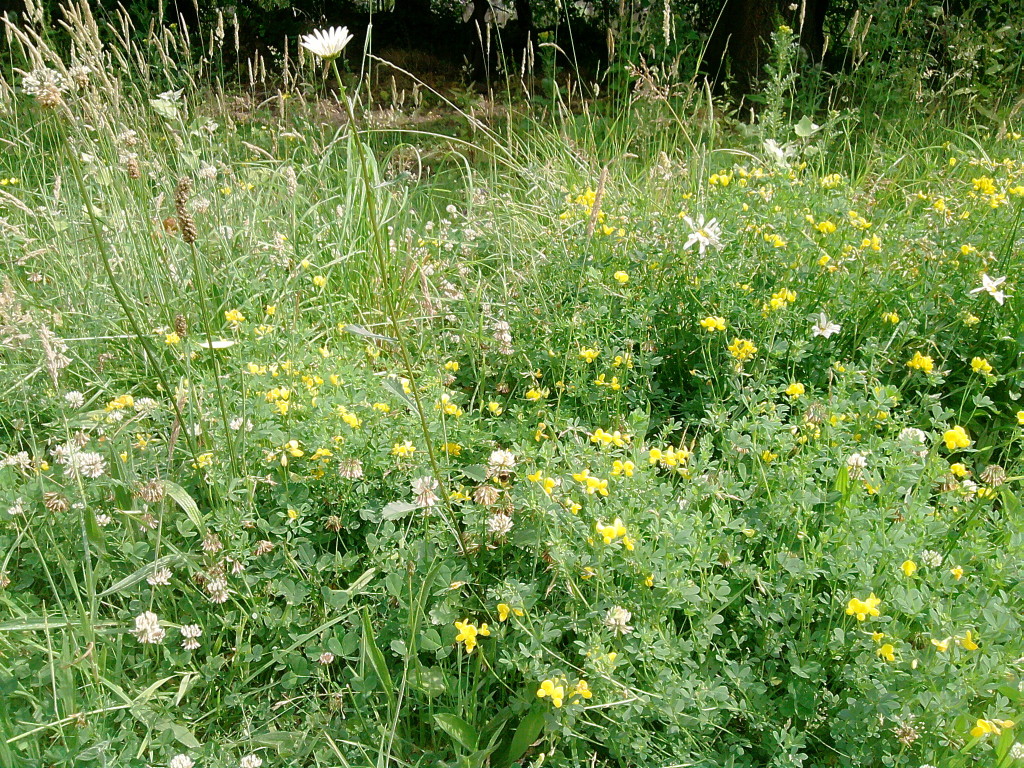 This is a larger photo than usual, mostly because you need a larger one to see the very small clover flowers in this patch of wasteland under some sycamores on the river bank.
This is a larger photo than usual, mostly because you need a larger one to see the very small clover flowers in this patch of wasteland under some sycamores on the river bank.
This is white clover, but there is also red clover, a larger and showier plant, which has the pretty alternative names of clover rose and sugar bosses, and the tiny yellow clover, which you can find in lawns, less than an inch high and a quarter of an inch across.
Clover, to me, means honey. You can sprinkle the flower heads on salads for the sweetness of the nectar at the base of the little florets. Bees love it, and people can plant whole fields of it for the production of a white honey with a light flowery taste. When I was younger we used to get big tubs of Canadian clover honey, sometimes, and though I am very partial to the heather honey I discovered when I came to Scotland, this is still the definitive honey to me.
Clover’s big contribution, however, is nitrogen. It has nitrogen fixing nodules on its roots, which means that where you have grown it, the soil is richer and more fertile than before, and you often find it in green manure seed lists.
However, I have recently discovered that it also has medicinal uses. Hedgerow Medicine says that it was used as a blood cleanser,and for all kinds of chronic complaints that involve the build up of waste products – constipation, skin complaints and stubborn coughs. It is said to regulate unbalanced hormones, and is included in some cancer treatments, though this is considered controversial, and the plant is not recommended for anyone receiving blood thinning treatment.
Clover is generally regarded as lucky, especially if you find a four-leaved clover, and is said to ‘hinder witches’ under the name trefoil. In the Welsh story Culhwch and Olwen, from The Mabinogion, Olwen was said to be so beautiful that four white clovers sprang up in her footsteps. It’s a pleasant flower and I’m always glad to find it in my lawn.
Leave a Reply